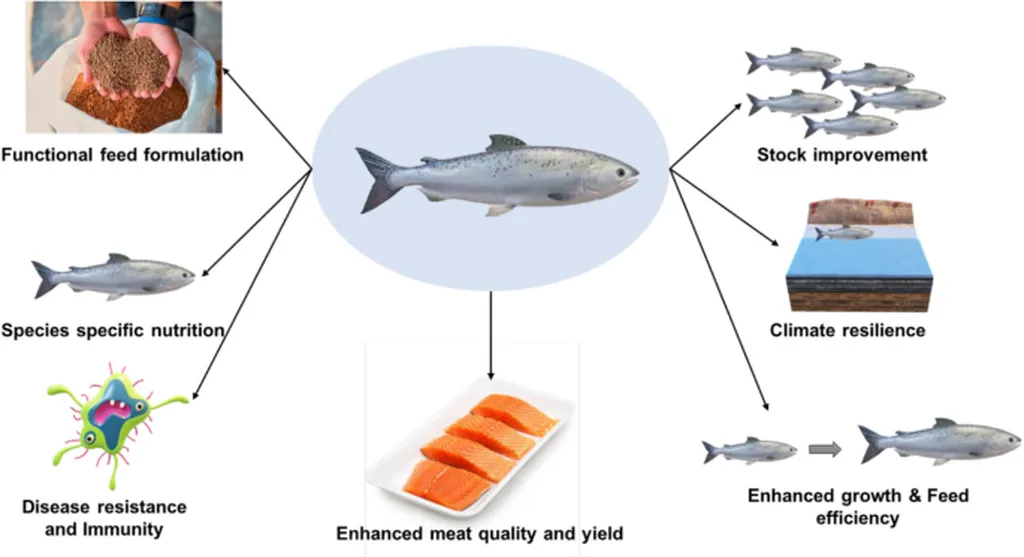In the heart of Kashmir, a groundbreaking study is making waves in the world of aquaculture, offering promising insights into fish growth and nutrition. Researchers at the Sher-e-Kashmir University of Agricultural Sciences & Technology of Kashmir have discovered that the RNA:DNA ratio could be a game-changer in assessing the growth performance of scale carp (Cyprinus carpio var. communis), a species of significant commercial value in aquaculture.
The study, led by Hussna Bhat from the Division of Fish Genetics and Biotechnology, explored the effects of different dietary protein levels on the growth of scale carp fingerlings. The researchers fed the fingerlings with three varying levels of silkworm pupae supplement and a control group with no supplement. The results were striking. The RNA:DNA ratio, a marker of cellular growth and metabolic activity, was highest in the group fed with the highest level of silkworm pupae supplement (T1), followed by the medium level (T2), and the lowest level (T3). The control group showed the lowest ratio.
The growth performance of the fingerlings mirrored the RNA:DNA ratio results. “The highest weight gain was recorded in T1, followed by T2 and T3, while the control achieved the lowest weight gain,” Bhat explained. This correlation suggests that the RNA:DNA ratio could serve as an effective and rapid indicator of growth performance in scale carp.
The commercial implications of this research are substantial. Scale carp is a popular species in aquaculture due to its fast growth rate and high market value. By optimizing dietary protein levels, fish farmers can enhance growth rates and feed efficiency, leading to increased productivity and profitability. Moreover, the use of silkworm pupae, a byproduct of the silk industry, offers a sustainable and cost-effective protein source, aligning with the growing demand for eco-friendly aquaculture practices.
This study, published in the International Journal of Bio-Resource and Stress Management, opens up new avenues for research in fish nutrition and growth assessment. As Bhat noted, “The RNA:DNA ratio seems to be a promising tool for monitoring growth performance in aquaculture.” Future research could explore the application of this method to other fish species and investigate the underlying mechanisms driving the correlation between RNA:DNA ratio and growth performance.
In the ever-evolving field of aquaculture, this research offers a fresh perspective on optimizing fish growth and nutrition. As the global demand for seafood continues to rise, innovative solutions like these will be crucial in meeting the challenges of sustainable and efficient aquaculture production.

